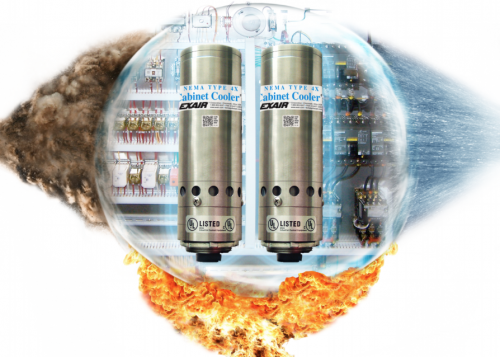HOW TO SIZE YOUR CABINET COOLER?
We’re right in the heat of summer in the Northern Hemisphere, with heat waves rampant across much of Europe. You all know what that means, it’s Cabinet Cooler season!! When working with a new customer for a Cabinet Cooler application, the first step is always going to be the same. Get them to fill out the Cabinet Cooler Sizing Guide so you can determine the appropriate Cabinet Cooler for their particular application.

The information contained on this form MUST be both complete AND accurate. Otherwise, the calculations will be based on false data. The temperatures should be taken with a thermometer or thermocouple, not an infrared temperature gun. These devices merely take a reading of the surface temperature and not the air temperature. It’s important to communicate to your customer just how important these values are. If the temperatures given are lower than the actual temperatures, we’ll undersize the Cabinet Cooler and they’ll be right back where we started during the hottest summer temperatures. If they over-exaggerate the temperatures, we’ll end up giving them a cooler that’s too large and if not operated with a thermostat will consume more compressed air than necessary.
There are different things we see when getting back Cabinet Cooler Sizing Guides. Make sure you’re reviewing the data given so that it makes sense. Here’s a few examples we notice from customers:
1. Current internal temperature given is lower than the current external temperature:
More often than not, this is simply a mistake from the customer. If the internal temperature is cooler than the external temperature, there has to be an A/C cooler or other cooling device already installed. If there is, find out the rated cooling capacity of the A/C cooler as we’ll want to match that with the corresponding Cabinet Cooler. This is the most common clear indication that the values given are not accurate. If you get a sizing guide where the current internal temperature is lower than the external, ask your customer to confirm and inquire about any other cooling method that may be installed.
2. Not indicating if fans are installed:
Cabinet Coolers must be installed on sealed enclosures, this means any fans that are installed must be removed and sealed off. Fans do provide cooling inside the panel, so we must account for this when calculating the necessary Cabinet Cooler.
3. Giving a range instead of actual temperatures:
If a range is given, the customer has simply estimated what they believe to be the temperatures that they experience in the cabinet. The current Delta between the internal and external temperatures is the most critical value in determining the internal heat load of the cabinet. With a range, we have no way of determining what that temperature differential is.
It’s very important to review the sizing guide data given to you before trying to make any calculations. Otherwise, you’re simply wasting your time and will have to go back and do it again. If you’re clear and up front with the customer from the beginning it makes this process much easier. Sometimes, the Cabinet Cooler isn’t going to be suitable for the application.

As another example; on an application with a customer where the Cabinet Cooler wasn’t going to provide enough cooling in order to maintain their target temperature of 35°C inside. At first glance, it looked like it may be alright. Thankfully the customer included a photo of the enclosure in addition to filling out the sizing guide. He had left the field asking about fans blank. In the photo, a large fan was clearly located on the panel. The fan installed was 6” in diameter, providing 260 CFM (441 m3/hr) of airflow. To calculate the heat dissipated from the fan, we multiply the flow in SCFM by the Delta between current internal and external to get the heat load in Btu/hr. In this case, the temperature inside of the cabinet was 123°F (51°C) and the target was 95°F (35°C). With a Delta of 28°F, the fans are already removing more heat than what a Cabinet Cooler could provide.
260 SCFM x 28∆T = 7,280 Btu/hr
The largest Dual Cabinet Cooler only provides 5,600 Btu/hr, making this application one that is not suitable for our Cabinet Coolers. Rather than spending both yours and your customers time going back and forth about a potential sale, make sure you have everything up front.
Please feel free to call or email us if you have any questions about Cabinet Coolers or need help calculating the right one. At Airtec, we are happy to help you!
The Basics of the Line Vac
Learn MoreElectronic Flow Controller
EFC is a user-friendly electronic flow control for compressed air that is designed to minimize compressed air use on blow off, drying, cooling, conveying and static elimination operations.
Learn More

